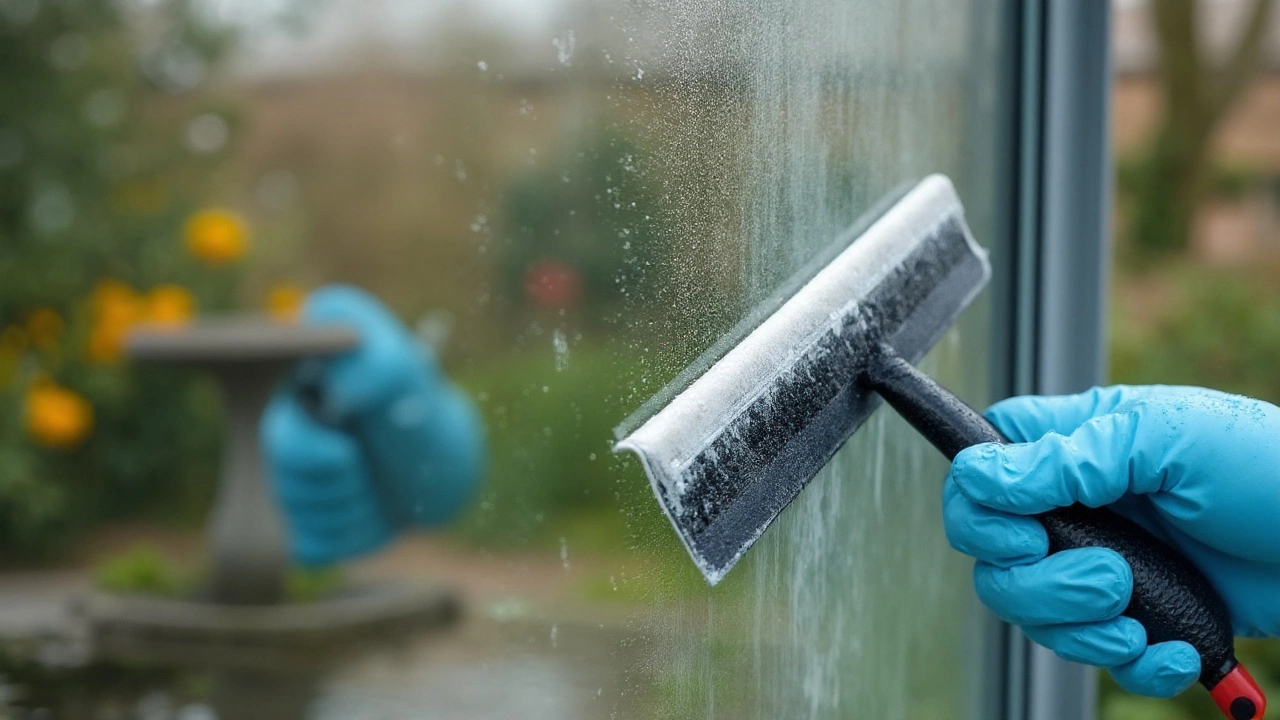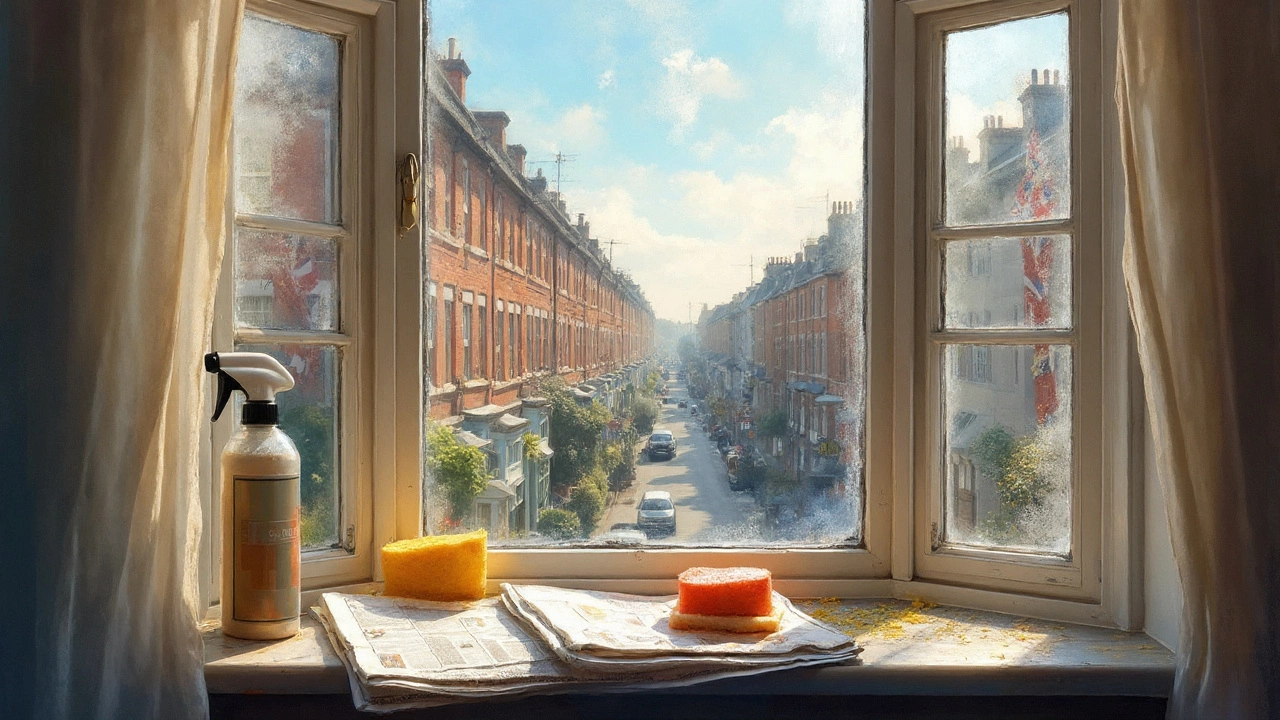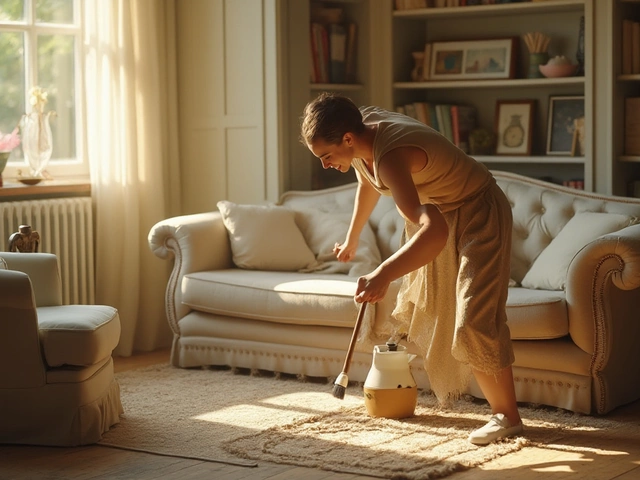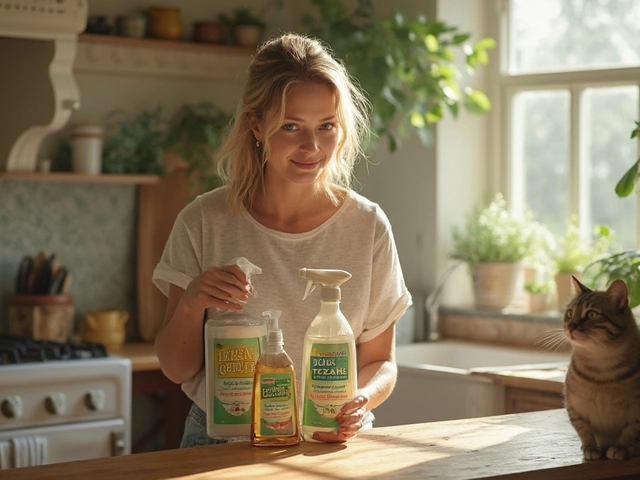Sticky fingerprints, layers of dust that you can write your name in, streaks turning your sunny window into a foggy mess—it’s wild how quickly windows can go from crystal clear to a downright eyesore. Most folks put off cleaning because the grime looks too far gone or the job seems never-ending. What if I said it doesn’t have to be such a chore, even for the grossest windows out there?
Here’s the secret—regular window cleaning is rare. Surveys from 2023 showed that nearly 60% of UK residents clean their windows less than twice a year, and only 12% do it monthly. By the time most of us get around to scrubbing, the dirt has really settled in. But with the right approach, anyone can get their windows sparkling again. Whether your glass hasn’t seen sunlight in months or your last cleaning was back when Game of Thrones was still on TV, these tips will help you tackle even the worst messes with speed and less elbow grease than you’d expect.
Understanding Window Grime: What Makes Windows So Dirty?
Ever notice how some windows get filthier than others, even in the same neighborhood? That’s because window dirt isn’t just dust—it’s a cocktail of pollutants, pollen, water stains, oily residues from hands and cooking, and, if you’re on a city street, exhaust soot. In kitchens, you get greasy build-up, and if you have pets, nose smudges turn up like magic. The stuff bonds to glass, especially if you wait weeks between cleanings, and UV rays can actually bake dirt onto the pane, making it stickier and harder to remove.
Rain alone doesn’t help; it can actually make things worse. Rainwater leaves minerals and leaves behind spots, especially in areas with hard water. Also, airborne contaminants stick better to a wet window than a dry one. If you live near a construction site or a busy street, you’ll probably notice a stubborn gray coating from fine dust and traffic pollution. These details matter because understanding what’s on your windows changes how you tackle it.
There’s a surprising fact: studies from the American Cleaning Institute found that windows facing a street get dirty up to twice as fast as those facing a garden or courtyard. Bedroom and bathroom windows tend to collect less grease than kitchen and living room panes, but more moisture, leading to mold spots and water stains. We’re not just fighting grime here; we’re dealing with a mix of chemistry and weather!
Choosing the Right Supplies: What Works Best?
You don’t need fancy gadgets or magic spray—just the right combo of basic, reliable tools and good technique. Here’s what actually helps:
- Two buckets: One for soapy water, one for clean rinse water. This stops you from just moving dirt around.
- Microfiber cloths or scrub pads: They trap dirt instead of just pushing it around. These are a game-changer for streak-free glass.
- A quality squeegee: This is your best friend if you want that pro-cleaner look. Go for one with a sharp, rubber blade—replace it when the edge gets blunt.
- Mild dish soap: Simple, cheap, and surprisingly effective for cutting grease and grime. About a teaspoon per quart of water does the trick.
- White vinegar: Cuts mineral deposits and deals with water stains. Mix it 50/50 with water for a DIY window spray.
- Old toothbrush: Great for tracks and corners where grime loves to hide.
- Soft-bristle brush or an old paintbrush: Loosens dry dirt before you go in with water.
- Extension pole: If you have tall windows, save your back and use one.
Want to make it eco-friendly? You’re in luck—no fancy chemicals required. Most commercial window cleaners rely on ammonia or alcohol, which you can skip if you prefer a gentler approach. If you have pets or kids, stick with plain vinegar and dish soap and you’re good to go.
| Item | Purpose | DIY/Sustainable Option? |
|---|---|---|
| Microfiber Cloth | Streak-free finish | Yes, reusable |
| Squeegee | Removes water, prevents streaks | No direct swap, but lasts years |
| White Vinegar | Removes mineral stains | Yes, natural |
| Dish Soap | Breaks down grease | Yes, biodegradable brands available |
| Razor Blade (for paint) | Scrapes tough spots | Use gently, never on tempered glass |

The Step-by-Step Method for Super Grimy Windows
Tackling filthy windows isn’t about scrubbing until your arms hurt. It’s about working smart and following a plan. Here’s a method I swear by, especially when the grime looks hopeless:
- Dry brush first: Use a dry microfiber cloth or a soft brush to knock loose dust, cobwebs, and loose bits. This keeps you from making muddy streaks later.
- Attack the corners and tracks: Dip your old toothbrush in soapy water and work it into corners and tracks. You’ll be shocked at the crud that collects here.
- Mix your cleaning solution: Use a bucket of warm water, a dash of dish soap, and a splash of white vinegar if you’ve got mineral spots. For very oily windows (like kitchen ones above the stove), a bit more soap won’t hurt.
- Wash the glass: Dunk a microfiber cloth or sponge in your solution, wring out the excess, and work from top to bottom. Scrub in circles or tight S-shapes to break up stubborn spots.
- Squeegee time: Start at the top of the glass and pull the squeegee straight down in a single motion. Overlap your lines a bit. Wipe the blade with a dry rag after each stroke to dodge streaks.
- Final polish: Buff the glass with a clean, dry microfiber to snag any extra water drops or smears.
- Don’t forget frames and sills: Wipe them down with soapy water, rinse, and dry. If the paint’s flaking or there’s mold, use a dedicated cleaner or mild diluted bleach (wear gloves).
Here’s a little-known tip: clean windows when it’s cloudy, not sunny. Sunlight dries the solution too fast and causes streaks. Also, avoid using newspaper—modern inks can leave marks. If your window has sticky gunk (like old tape or paint drips), gently use a razor blade at a 45-degree angle. Never dig deep or use on tinted/tempered glass—you’ll scratch it.
Regular window cleaning isn’t only about looks. According to a 2024 report by the International Window Cleaners Association, cleaning windows can double the amount of natural daylight getting into your home. That extra daylight isn’t just good for mood—it can help you save on electric lighting. Besides, nobody needs one more “ugh” moment when looking outside for some fresh air or sunshine.
Troubleshooting: Common Problems and Expert Hacks
Even the best method sometimes leaves you with problems. Here’s how to deal with the classics:
- Streaks After Cleaning: Usually means either your solution dried too fast, or you didn’t wipe the squeegee enough. Use less soap and try the squeegee method, making sure to overlap each pass.
- Sticky Films: If standard dish soap doesn’t work, use a mix of vinegar and hot water. For ultra-stubborn spots (like smoker's residue), a small amount of rubbing alcohol can break things up—test on a corner first.
- Hard Water Spots: Vinegar is your friend. Soak a paper towel or cloth in straight vinegar, lay it on the spot, let it sit for a few minutes, then scrub gently. For ancient calcium stains, specialty limescale removers (without strong acid) work well, but always wear gloves.
- Mold and Mildew: Wear a mask, ventilate, and use diluted bleach (1:10 with water) just on the moldy areas. Rinse thoroughly and dry, so it doesn’t return. If it comes back often, check for leaks or excess condensation in the room.
- Sticky Window Tracks: After brushing and vacuuming loose dirt, use the hooked end of a plastic straw or a chopstick wrapped in cloth to drag out the muck. Rinse with a bit of soapy water, dry, and lightly oil tracks with silicone spray for easy sliding.
- Paint Drips or Tape Residue: Soften adhesives with a hair dryer, then gently peel or use a razor at a shallow angle. Don’t gouge the glass! Alcohol wipes can help finish sticky spots.
Still getting mystery marks or residue? Water quality can be the sneaky culprit. Try cleaning with distilled water and see if things improve, especially in areas with really hard tap water. If you want a professional hack, window cleaning pros often add a drop of dishwasher rinse aid to their water for an extra shine. Another pro tip: a bit of cornstarch in your vinegar mix can actually help scrub and buff the glass, giving an even more polished finish.
Anyone dealing with high-rise or dangerously placed windows—don’t risk life and limb. Telescopic poles, magnetic cleaners (for double-paned), or even hiring a pro are smart moves. Your neck and nerves will thank you.

Smart Maintenance: Keeping Windows Cleaner, Longer
Once your windows are sparkling, the secret to keeping them that way is to make cleaning less of a nightmare next time. Timing is everything—a quick 5-minute wipe every month beats a marathon scrub once a year. Here’s how to keep glass looking great between real deep cleans:
- Wipe smudges as soon as you see them: Don’t let fingerprints or pet marks sit for weeks. Quick wipe-downs are easy if you keep a microfiber cloth nearby.
- Install window screens: Studies show they block up to 80% of airborne dust and bigger debris, especially if you have lots of pollen or bugs in your area.
- Use the right curtain or blind: Sheer curtains filter dust, while certain roller blinds are easier to clean and don’t trap as much grime.
- Control humidity: A dehumidifier keeps mold and water stains at bay, especially in problem rooms like bathrooms or basements.
- Polish with anti-static spray: These sprays repel dust for weeks. DIY anti-static mix: a splash of fabric softener in water.
And if you want to go the extra mile, try rain-repellent sprays on outside panes (like the stuff made for car windshields). It helps water bead up and roll off, taking a lot of loose dirt with it. A 2023 test by Consumer Reports found these sprays kept windows 40% cleaner after three rainstorms than untreated glass. That’s less scrubbing for you.
Quick wins add up. Even if you skip pro tools or high-end gadgets, those little habits—quick wipes, screened windows, and a solid squeegee—are what keep glass shining long-term. Clean windows don’t just look good; they brighten the whole place, inside and out. You don’t have to be a neat freak, just a little strategic.




